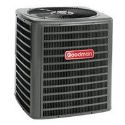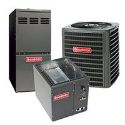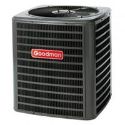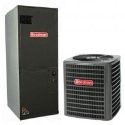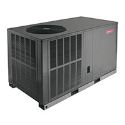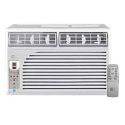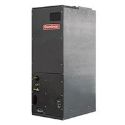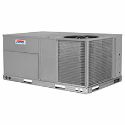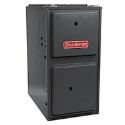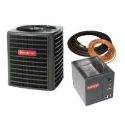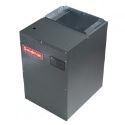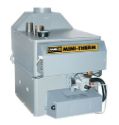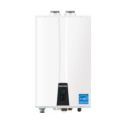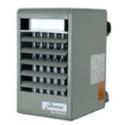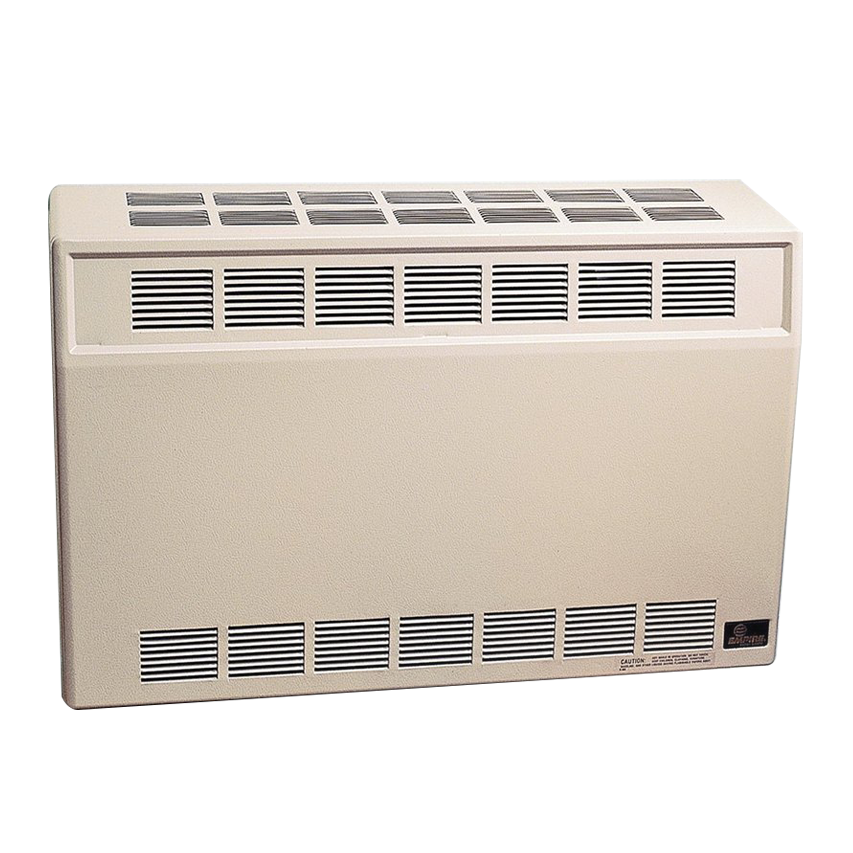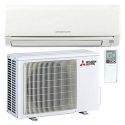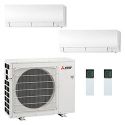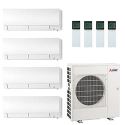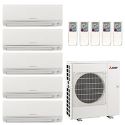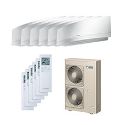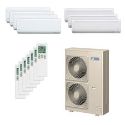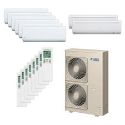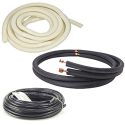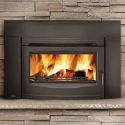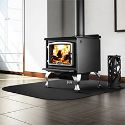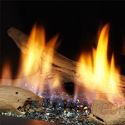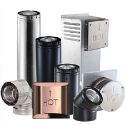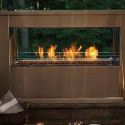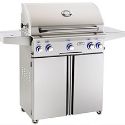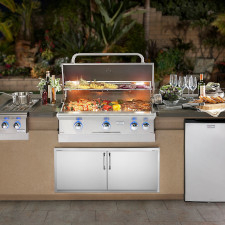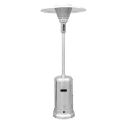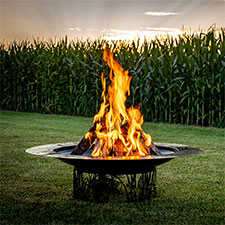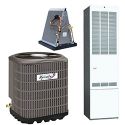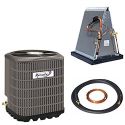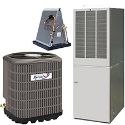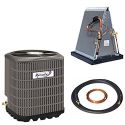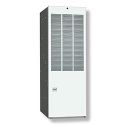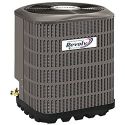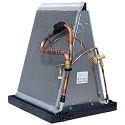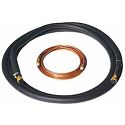Why to Use Inserts for Energy-Efficient Fireplaces
If you want the aesthetic of a classic fireplace with the efficiency of a modern HVAC unit, an energy-efficient fireplace insert is an excellent home heating option. This device is placed into an existing fireplace and used to generate heat in place of the ordinary brick-and-mortar fireplace.
There are many reasons to choose a fireplace insert for heating one room or several. Let's look at the benefits of these energy-efficient fireplaces as well as the types of fireplace inserts available.
What are Traditional Fireplaces?
A traditional fireplace is a cavity in the wall that burns fuel - typically either wood or gas. The heat from the burning fuel radiates out and warms up the rest of the room.
Traditional fireplaces can be planned for during the construction of a home or added later as part of a home renovation. A fireplace can be constructed out of brick and mortar or purchased as a pre-built unit from a factory and then incorporated into the wall.
What are Fireplace Inserts?

On the other hand, a fireplace insert is a fireproof box made of cast iron or steel. They are inserted into an existing fireplace. The range of fuel it burns varies from traditional wood to gas or pellets.
Installing a fireplace insert is far cheaper than doing a complete home renovation to add or update a brick-and-mortar fireplace. Additionally, inserts give the homeowner the option of choosing a design that fits with their home décor since fireplace inserts come in various shapes, sizes, and designs.
The biggest benefit of all, though, is their efficiency. They work using a closed combustion system that pulls the required air from outside. Doing so means that fuel burns cleaner and generates more heat, so you need less fuel to heat your home than in an open combustion system.
How Long Do Fireplace Inserts Last?
This depends on the type of insert. A typical wood-burning fireplace insert lasts about 10 years with proper maintenance. Electric inserts can work for up to 20 years. The exact length can vary based on how frequently you use them.
Do Fireplace Inserts Produce Heat?
The insert itself does not produce heat - you will still need a fuel source such as wood, gas or electricity. However, they do transfer heat more efficiently than a traditional open fireplace. This means you'll need less fuel to produce the same warmth.
What are the Types of Fireplace Inserts?
Fireplace inserts are broadly categorized based on the type of fuel they consume to generate the heat to warm up your home. The three main fireplace inserts are:
- Gas inserts
- Wood-burning inserts
- Electric inserts
How Do Gas Fireplace Inserts Work?
A gas fireplace insert operates by burning either propane or natural gas. They will typically tap gas from the home's gas lines or a propane tank that is set up outside the home.
- Vented Gas Inserts: A vented gas insert releases the exhaust fumes through a preexisting chimney. Therefore, there is no chance of carbon monoxide accumulating within the home and causing poisoning.
- Vent-Free Gas Fireplace Inserts: A ventless gas insert relies on the home's ventilation to discard the exhaust fumes. They monitor the carbon monoxide levels and use a meter to regulate how much gas they burn.
The safety standards for gas inserts are quite high to prevent carbon monoxide buildup. When carbon monoxide levels are high, they automatically shut down or reduce the amount of gas they're burning.
- Gas Leaks: The mechanism of a carbon monoxide sensor is different from a sensor that would sense a gas leak. This is because carbon monoxide, natural gas and propane are completely different chemical compounds. Please ensure your system is equipped to detect both carbon monoxide and propane or natural gas leaks.
- Efficiency of Gas Inserts: Gas inserts have an efficiency of between 70% and 90%.
How Do Wood-Burning Fireplace Inserts Work?
These inserts generate heat by burning wood or wood products. The exhaust fumes from the burning fuel are guided to the chimney of the house via a chimney flue.
- Efficiency of Wood-Burning Fireplace Inserts: The typical efficiency of these units is around 50%. This lower efficiency stems from the fact that heat is lost in several ways, such as exhaust gases carrying heat up the chimney that would have been used to warm the home. However, some newer wood inserts can reach up to 80% efficiency.
These units are suitable in homes with pre-existing furnaces and where wood is abundant. A wood-burning fireplace insert has a traditional design aesthetic which is appealing to many homeowners.
- Maintaining a Wood-Burning Fireplace Insert: These units require regular maintenance to remove soot from the chimney. Inevitably, some smoke will get into the house and might prove a major irritation to some homeowners.
How Do Electric Fireplace Inserts Work?
These units operate by passing an electric current through an element. The element heats up and transfers the heat by convection currents to the air in the room. The energy efficiency of electric fireplaces is 100% as all energy is converted to heat; however, they do not warm a room as well as gas or wood-burning inserts.
The advantage of these inserts is that they're available in different ratings. The homeowner has the option of picking the size he or she wants. The selected rating consumes a predictable amount of electric energy, making your bill predictable as well.
Please call or chat with us to learn more or visit our listing to see our full range of fireplace inserts.
 Shopping Cart
Shopping Cart



